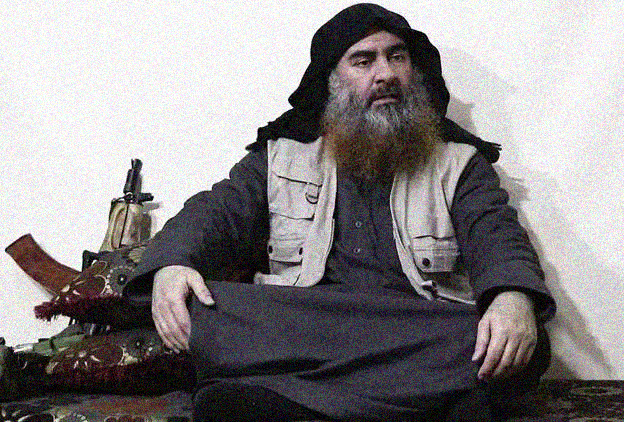Islamic State (IS) chief Abu Bakr Al-Baghdadi is alive and well — in the pink barring signs of age — if a video that has surfaced on the IS media network Furqan is to be believed. The undated video gives no detail of the time or place it was made. But the timing of the release of this video is perfect. Al-Baghdadi is seen speaking about the group’s losses at Baghouz. He claims the fight is far from over and also congratulates perpetrators of the suicide bomb attacks on churches and hotels in Sri Lanka on Easter Sunday. The video has surfaced barely days after US President Donald Trump claimed that the IS was wiped out from the areas they held in Syria. “The Caliphate is gone as of tonight,” Trump had claimed showing a map of IS held territories. Al-Baghdadi’s video, if authentic, is proof of the reach and capabilities of the terrorist organization and its efficacy. Technological superiority and intelligence networks are probably the only capable instruments available now to fight terror; but despite that the leadership of such organisations, although battered, still remains alive. One even more worrisome development is that the National Investigation Agency, the NIA, has uncovered an IS module that was planning Sri Lanka type blasts in Tamil Nadu and Kerala. The southern states have for long been the target of terror networks and their presence has been suspected for quite some time, particularly since the blasts at Coimbatore. There were alarming reports in the past of how the entire Malabar region was sitting on a powder keg, with covert production of firearms and explosive devices. Political rivalries rampant in the state nurtured the growth of such activities. Although states such as Tamil Nadu and Kerala are yet to witness incidents of terror of the kind that has been seen around the country, they cannot afford to be negligent. Many radicalised youth from these states have gone and joined the IS in Syria and Afghanistan. Reports have also emerged of many of them having died fighting for the outfit. IS reports, however, have been doing the rounds that recruits from India are considered incapable as fighters since they do not possess the grit required for combat in tough desert terrains.
The presence of outfits such as the IS is an indication of deep-rooted imbalances in society. Although countries such as the US and India call themselves democracies where all have equal rights, these are facades behind which communal hatred and bigotry thrive. Extra radical organizations such as the IS have ensured that terror remains in currency across borders. For attacks on mosques in New Zealand, the price was paid by Christians of Sri Lanka. The global spread of such reciprocal terror indicates that if there is an action in one corner of the world, the entire globe must be on alert to avoid retaliatory action. The attack in Sri Lanka has forced the government of that country to take strong action and ban women from wearing veils covering their faces. Such actions are seen as going against a particular religion, although the underlying motive is only to uphold national security. France, which had promulgated a similar law earlier, has continued to be the biggest terror target among all western European nations. Enactment of such laws can also become reasons for radicalisation of communities. The youngster who blew up a vehicle laden with explosives at Pulwama was reportedly radicalised because he had suffered ill treatment at the hands of some soldiers in the past. The cycle of violence has been unleashed. It will now take superhuman will to break this vicious cycle and restore peace in the world. It must be admitted that no nation has, as yet, found a complete remedy for terror attacks within its territory.




